1. Exploring Japan’s Mount Fuji
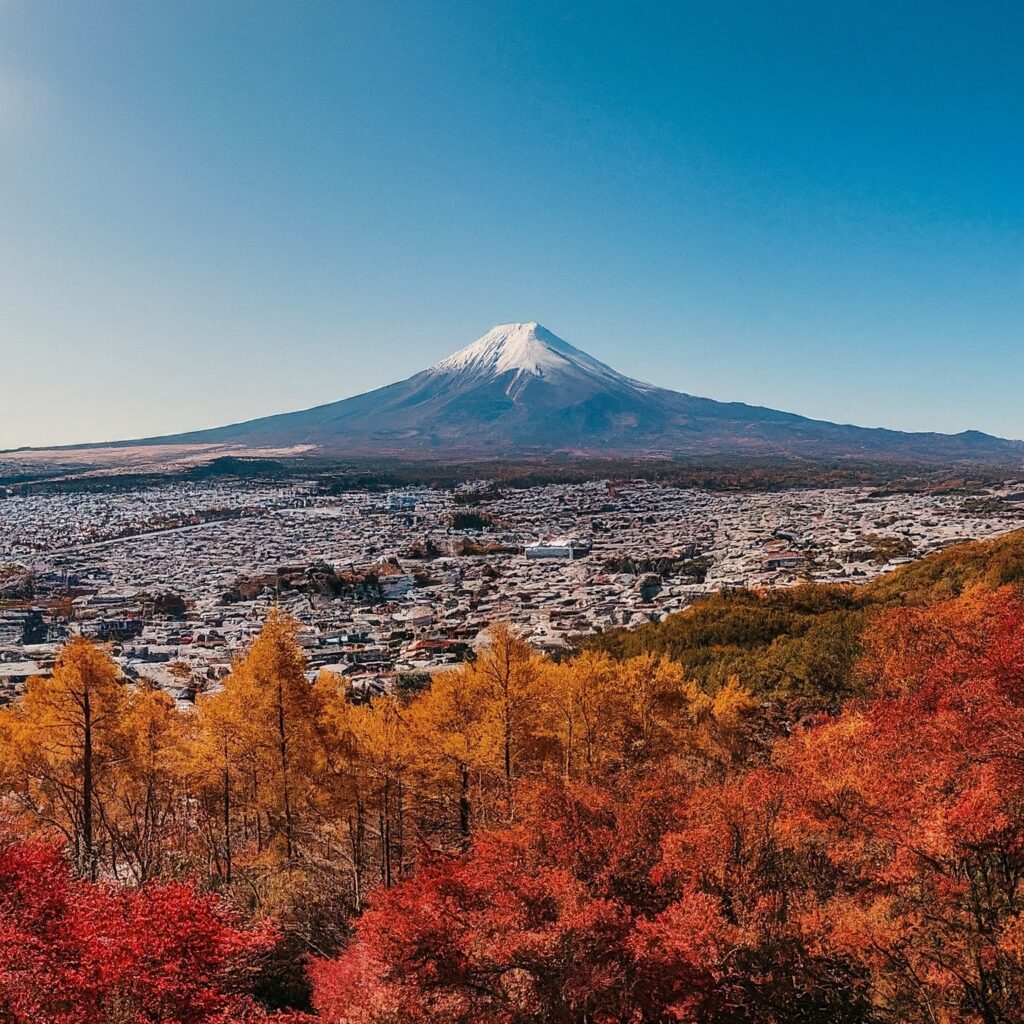
There’s a reason Mount Fuji graces countless Japanese artworks and cultural references. This majestic volcano, towering over 3,776 meters (12,389 ft), is not just a mountain; it’s a symbol of Japan’s natural beauty and spiritual significance. Travelers seeking a unique and awe-inspiring experience shouldn’t miss the chance to explore the “Land of the Rising Sun’s” most iconic landmark.
A Hike Through History: Mount Fuji, or Fujisan as it’s called in Japanese, offers a challenging yet rewarding climb for experienced hikers. The official climbing season is typically from July to September due to weather conditions. Hikers choose from various trails, each offering breathtaking views and a unique perspective of the mountain. For those seeking a more relaxed experience, the surrounding Fuji Five Lakes region provides stunning scenery and charming towns.
A Spiritual Journey: Mount Fuji holds deep spiritual significance for the Japanese people. For centuries, pilgrims have ascended the mountain to reach the summit crater, believed to be a gateway to the divine. Explore ancient Shinto shrines nestled at the foot of Mount Fuji, like the Fujisan Sengen Shrine, a UNESCO World Heritage Site. Witness traditional ceremonies and immerse yourself in the spiritual connection between the mountain and Japanese culture.
Beyond the Mountain: The surrounding Fuji Five Lakes region offers a plethora of activities for all types of travelers. Explore the charming towns like Kawaguchiko, known for its beautiful lakefront views and hot springs (onsens). Take a boat trip on Lake Kawaguchiko for a panoramic perspective of Mount Fuji reflected on the water’s surface. Explore museums dedicated to Mount Fuji’s history and natural wonders.
Experience the Magic of Mount Fuji: Whether you’re a seasoned climber or simply seeking a glimpse of Japan’s iconic landmark, Mount Fuji and the surrounding region offer a unique and unforgettable experience. Immerse yourself in the natural beauty, cultural significance, and rich history that make Mount Fuji a must-visit for any traveler to Japan.
2. Witness a Winter Wonderland: A Guide to Jigokudani Snow Monkey Park
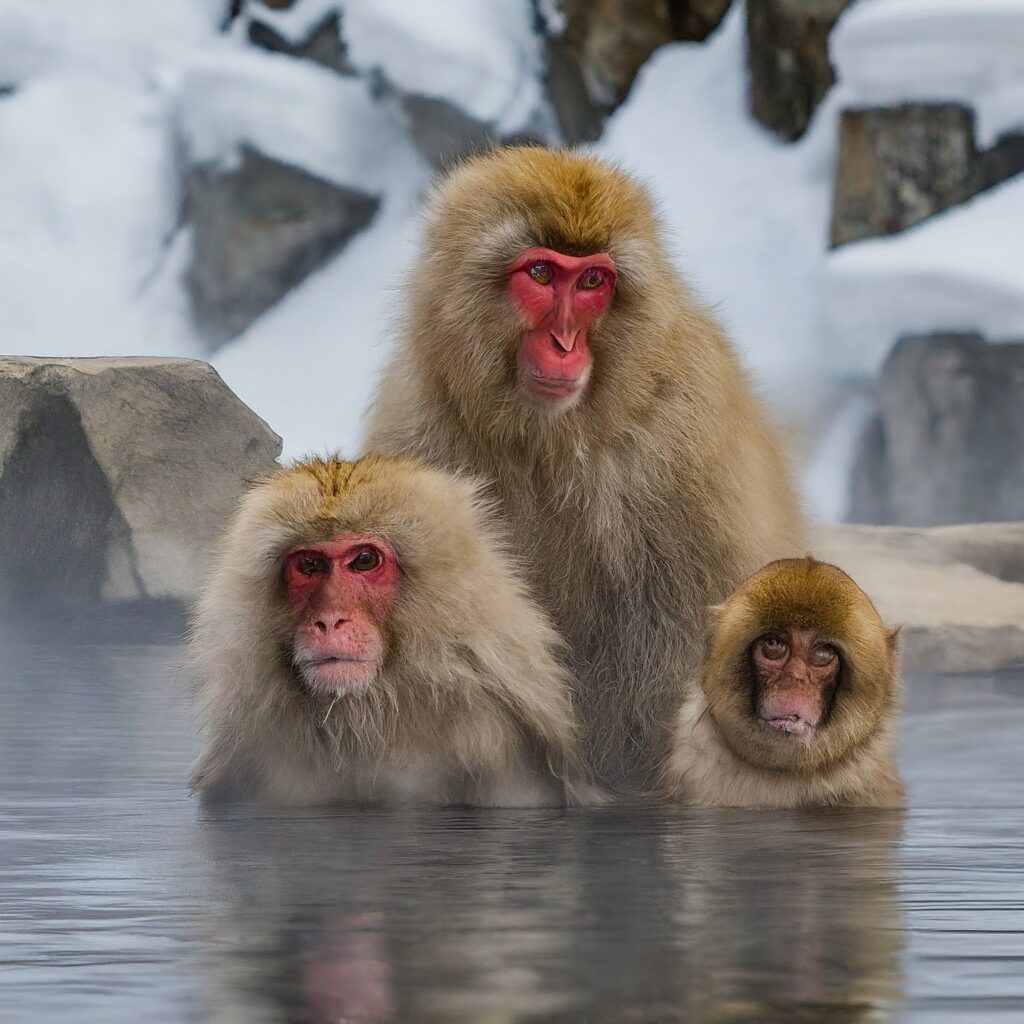
Nestled amidst the snowy mountains of Nagano Prefecture, Japan, lies Jigokudani Monkey Park, a haven for a unique troop of Japanese macaques, also known as snow monkeys. This captivating park offers a glimpse into the remarkable behavior of these intelligent primates as they soak in steaming natural hot springs during the colder months.
A Sanctuary for Snow Monkeys: Jigokudani, which translates to “Hell Valley,” earned its name due to the geothermal activity evident in the bubbling hot springs and surrounding steam. However, for the snow monkeys, this “hellish” landscape becomes a winter paradise. Observe these fascinating creatures as they huddle together in the warm natural pools, seeking solace from the harsh winter chill. The sight of these monkeys, with their expressive faces and gentle interactions, is sure to leave you spellbound.
Beyond the Monkeys: While the snow monkeys are the undisputed stars of the park, Jigokudani also boasts a stunning natural environment. Explore the serene forests surrounding the hot springs, teeming with diverse plant and animal life. Hike along well-maintained trails, breathing in the crisp mountain air and soaking up the picturesque scenery.
Planning Your Jigokudani Adventure: Jigokudani Monkey Park is a popular tourist destination, particularly during the winter months. Plan your visit during the peak season (December to March) to witness the iconic image of snow monkeys bathing in the hot springs. Be sure to dress warmly, as temperatures can drop significantly.
Experience the Magic: A visit to Jigokudani Monkey Park is a truly unforgettable experience. Witnessing these intelligent creatures in their natural habitat and observing their social behavior is a privilege not to be missed. So, pack your winter essentials and embark on a journey to witness the wonders of Jigokudani!
3. Unveiling Shirakawa-go: A Fairytale Village Nestled in Japan’s Mountains
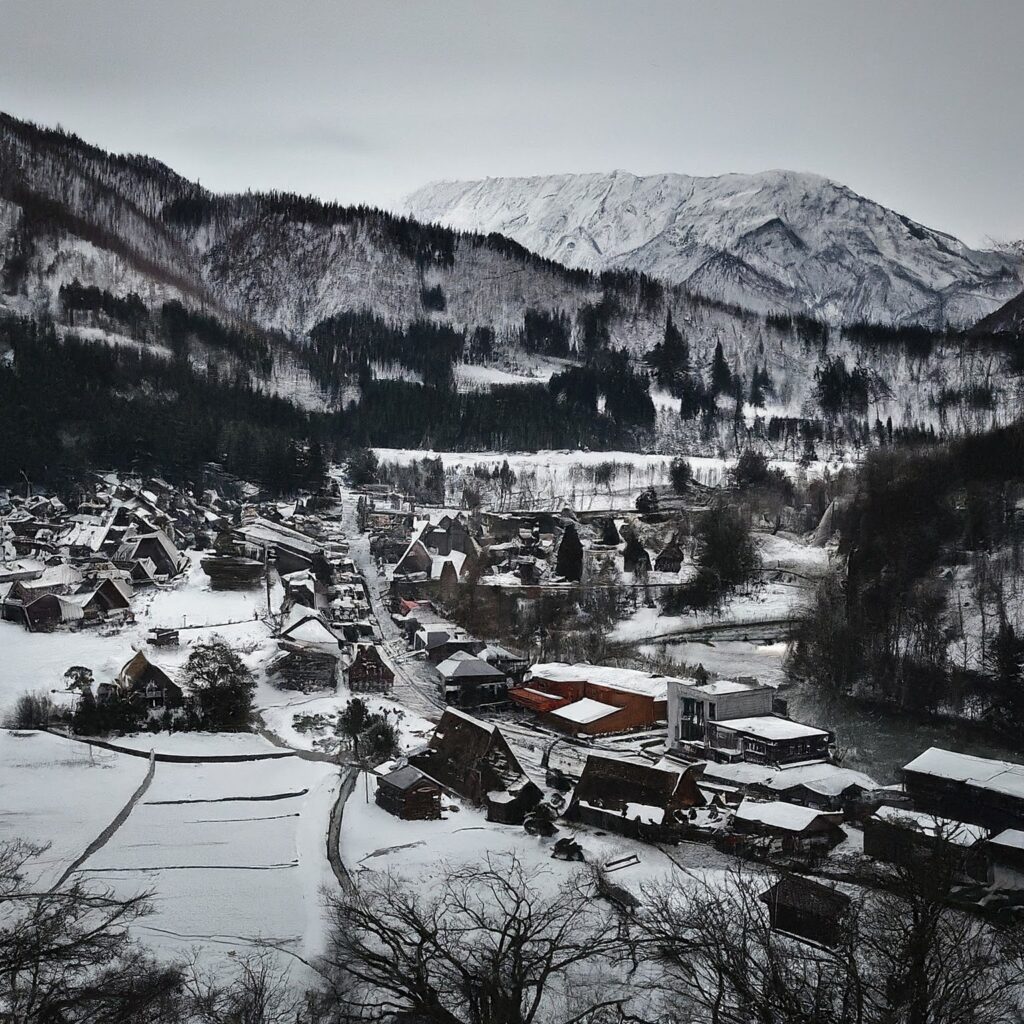
Deep within the Japanese Alps lies Shirakawa-go, a UNESCO World Heritage Site renowned for its unique gassho-zukuri farmhouses. These traditional dwellings, with their steeply thatched roofs resembling hands clasped in prayer, create a picture-perfect scene that transports visitors to a bygone era.
A Step Back in Time: Shirakawa-go’s charm lies in its well-preserved farmhouses. Built without nails, these structures showcase impressive carpentry techniques passed down through generations. The thatched roofs, crafted from thick layers of straw, provide excellent insulation against the region’s harsh winters. Explore the Ogimachi district, the largest concentration of gassho-zukuri farmhouses, and marvel at their architectural wonder.
Cultural Immersion: Shirakawa-go offers a glimpse into Japan’s rich rural heritage. During the spring and summer months, witness the vibrant green valleys surrounding the farmhouses. In winter, witness a magical transformation as the village gets dusted with snow, creating a postcard-perfect scene. Some farmhouses even function as minshuku (family-run guesthouses), allowing visitors to experience traditional Japanese hospitality and a night in a gassho-zukuri dwelling.
Beyond the Farmhouses: Venture beyond the iconic farmhouses and explore the charming village of Shirakawa-go. Visit the Shirakawa-go Folk Art Museum to delve deeper into the region’s history and traditional crafts. Don’t miss the chance to try local specialties like hoba miso, a flavorful soybean paste dish cooked on magnolia leaves.
Experience the Magic of Shirakawa-go: Shirakawa-go offers a unique blend of stunning scenery, historical architecture, and a glimpse into Japanese rural life. Whether you’re a history buff, a nature lover, or simply seeking a picturesque escape, Shirakawa-go promises an unforgettable experience.
4. Tsumago
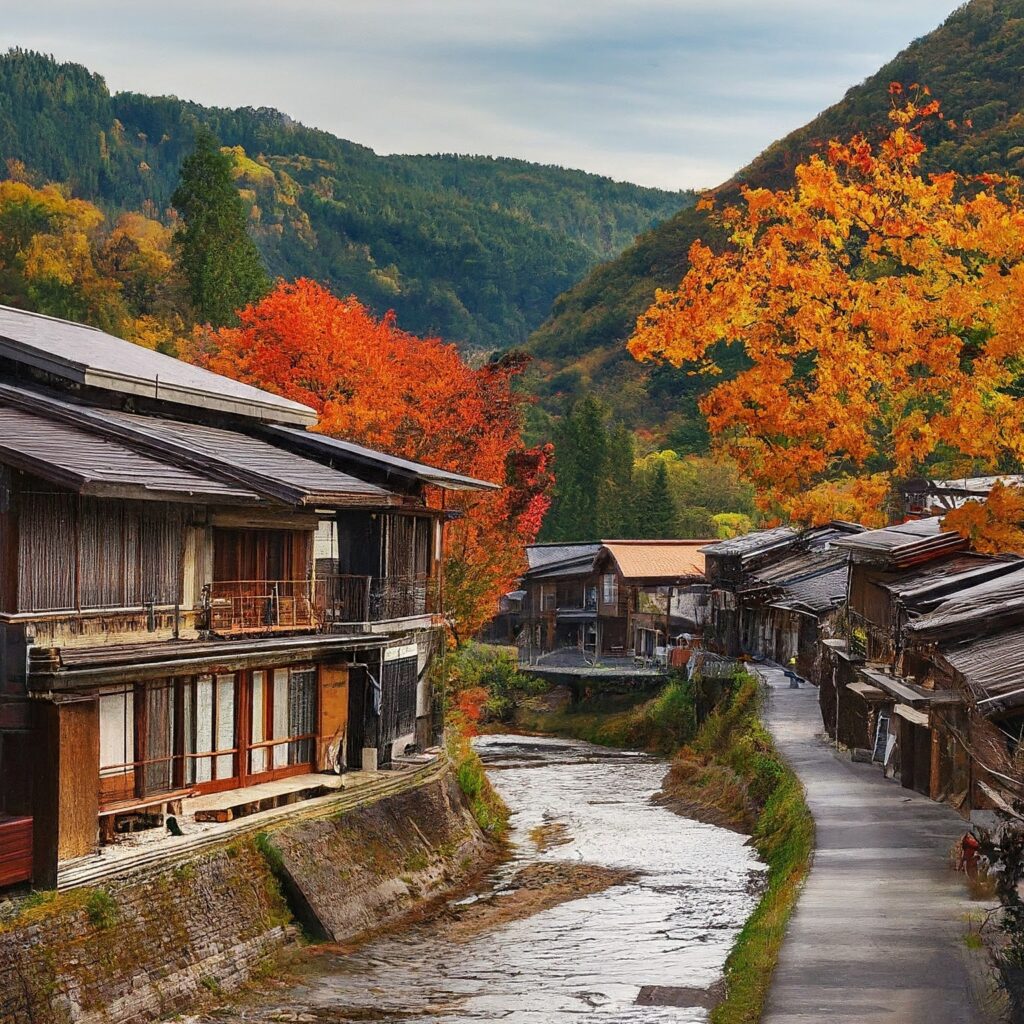
Nestled amidst the lush mountains of Japan’s Nagano Prefecture lies Tsumago, a charming post town that transports you back to the Edo period (1603-1868). Unlike its more modern counterparts, Tsumago offers a meticulously preserved glimpse into Japan’s bygone era, making it a haven for history buffs and travelers seeking an authentic cultural experience.
A Walk Through History: Tsumago’s main street, lined with traditional wooden buildings, is a visual feast. These structures, meticulously maintained, once housed inns (honjin and wakihonjin) that catered to weary travelers along the Nakasendo Way, an ancient highway connecting Kyoto and Edo (present-day Tokyo). Cars are prohibited on the main street during the day, allowing visitors to fully immerse themselves in the historical atmosphere. Explore the various shops selling local crafts, savor traditional Japanese snacks, and admire the architectural details that speak volumes about the town’s rich past.
Beyond the Main Street: Venture beyond the main street and discover Tsumago’s hidden gems. Explore the serene Kotoku-ji Temple, a Buddhist temple believed to date back to the 16th century. For a more in-depth historical experience, visit the Tsumago Post Town Museum, which showcases artifacts and exhibits that bring the town’s past to life.
A Perfect Pairing: Hike the Nakasendo Trail Tsumago’s charm extends beyond its borders. The town serves as a gateway to the historic Nakasendo Way. Embark on a scenic hike to the neighboring post town of Magome, offering a chance to experience the beauty of the Japanese countryside and delve deeper into the history of the route.
Tsumago: A Timeless Escape Tsumago offers a unique opportunity to experience the essence of Japan’s rich history and culture. With its preserved architecture, traditional atmosphere, and stunning natural surroundings, Tsumago is a destination that will leave a lasting impression on any traveler.
5. Unveiling Miyajima: A Spiritual Island Escape in Japan
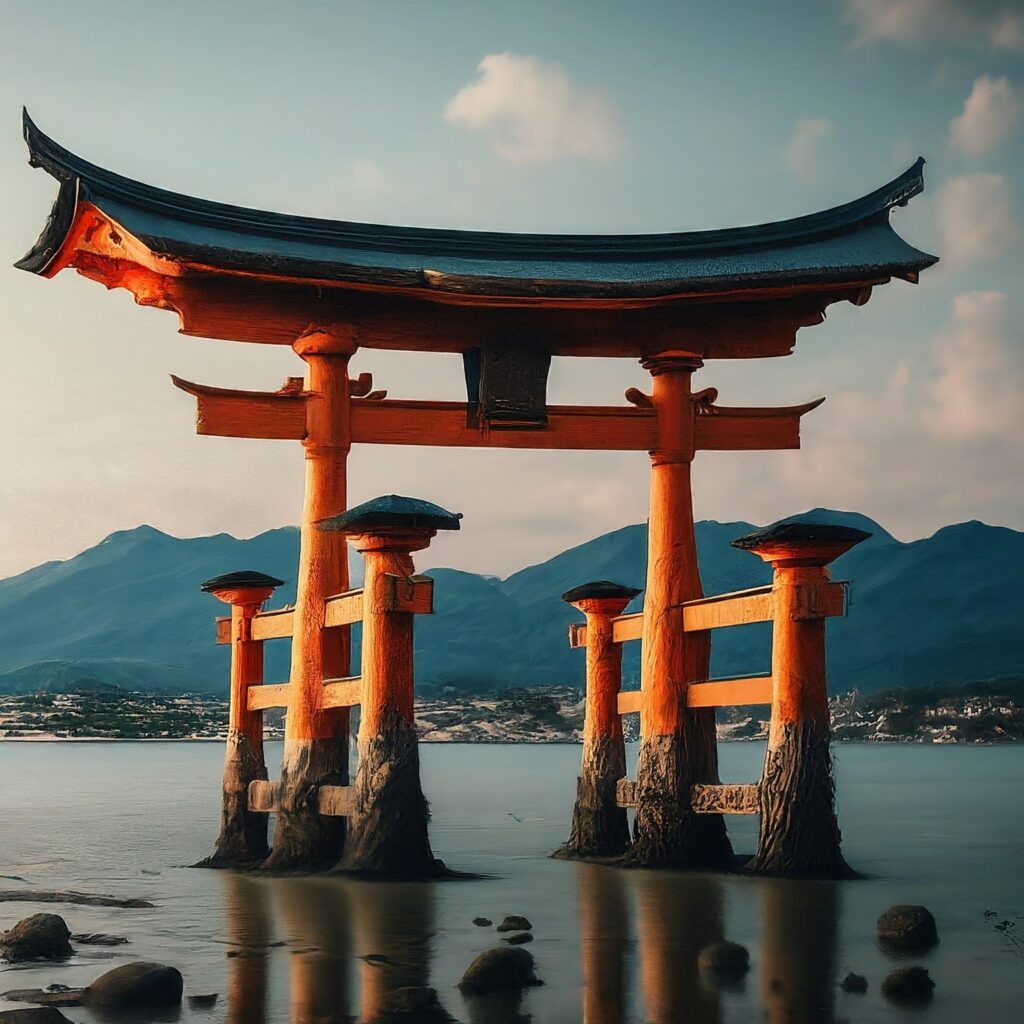
Miyajima, also known as Itsukushima, is a captivating island in Hiroshima Bay, Japan. Often referred to as “Shrine Island,” Miyajima offers a unique blend of natural beauty, cultural treasures, and a serene atmosphere. This enchanting island is a must-visit for travelers seeking a glimpse into Japanese tradition and breathtaking scenery.
A Gateway to Tranquility: Miyajima’s most iconic landmark is the Itsukushima Shrine, a UNESCO World Heritage Site. This vibrant orange shrine appears to “float” on the water at high tide, creating a truly awe-inspiring spectacle. Explore the shrine’s grand halls, intricate architecture, and serene atmosphere.
Beyond the Iconic Gate: Miyajima offers more than just stunning shrines. Hike Mount Misen, the island’s highest peak, for panoramic views of the Seto Inland Sea and the surrounding islands. Explore Momijidani Park, a haven of vibrant autumn foliage during the fall season. Encounter the island’s friendly deer, revered as messengers of the gods in Japanese culture.
A Feast for the Senses: Indulge in Hiroshima-style okonomiyaki, a savory pancake filled with cabbage, noodles, and various toppings. For a unique local experience, try momiji manjyu, a sweet bean paste cake shaped like a maple leaf, a symbol of Miyajima.
Experience the Magic of Miyajima: With its serene atmosphere, stunning scenery, and rich cultural heritage, Miyajima offers a captivating escape for travelers. Whether you’re seeking spiritual introspection or a scenic getaway, Miyajima promises an unforgettable experience.
6. Kanazawa: A Hidden Gem in Japan’s Cultural Tapestry
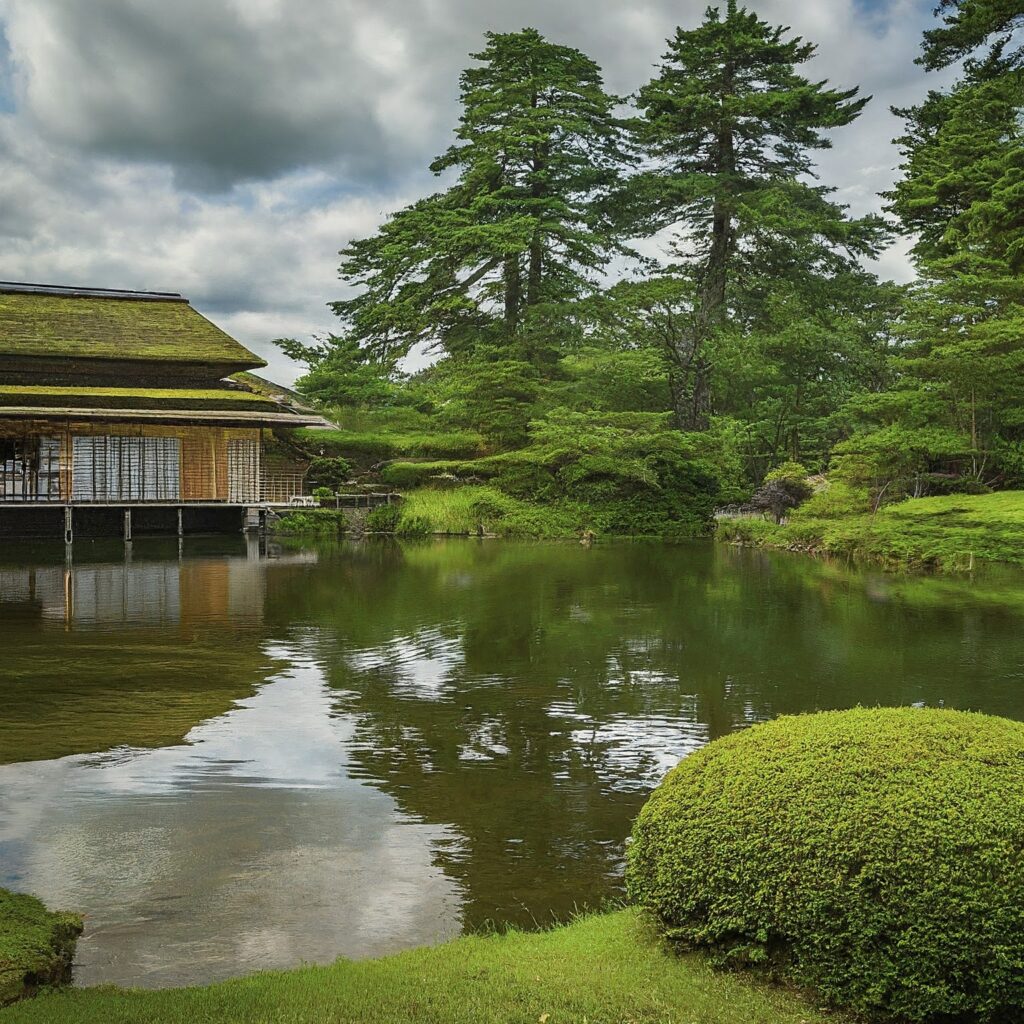
Often overshadowed by its more prominent neighbors, Kanazawa in Japan offers a unique and charming experience for travelers seeking a glimpse into traditional Japanese culture. This captivating city boasts a rich history, stunning gardens, and a vibrant art scene, making it a perfect destination for a peaceful and enriching escape.
A Walk Through Time: Exploring Kanazawa’s Historical Gems – Step back in time as you explore Kanazawa Castle, a magnificent structure that once served as the seat of power for the powerful Maeda clan. Wander through the beautifully preserved Kenroku-en Garden, considered one of the “Three Great Gardens of Japan,” and admire its serene ponds, meticulously landscaped grounds, and traditional teahouses. Explore the atmospheric streets of the Nagamachi Samurai District, a well-preserved neighborhood lined with traditional wooden houses that once belonged to samurai families.
A Feast for the Senses: Kanazawa’s Artistic Delights and Culinary Charm – Immerse yourself in the vibrant world of geisha culture in the Higashi Chaya District. Stroll along narrow streets lined with traditional teahouses and witness geisha gracefully walking by. Explore the 21st Century Museum of Contemporary Art, a renowned architectural marvel housing a diverse collection of modern and contemporary art. Indulge your taste buds in Kanazawa’s renowned seafood cuisine. Explore the bustling Omicho Market, a haven for fresh fish, local produce, and delicious street food. Savor the freshest sushi and experience the unique flavors of the region.
Beyond the Tourist Trail: Venture beyond the main attractions and discover Kanazawa’s hidden gems. Explore the Kenroku-en Garden at night for a magical illuminated experience. Take a day trip to the Noto Peninsula, a scenic region known for its dramatic cliffs, pristine beaches, and charming fishing villages.
Experience Kanazawa’s Enchantment: Kanazawa offers a captivating blend of history, culture, and natural beauty. Whether you’re a history buff, an art enthusiast, or a foodie, Kanazawa promises an unforgettable Japanese adventure.
7. The Blue Pond: A Fairytale in Japan
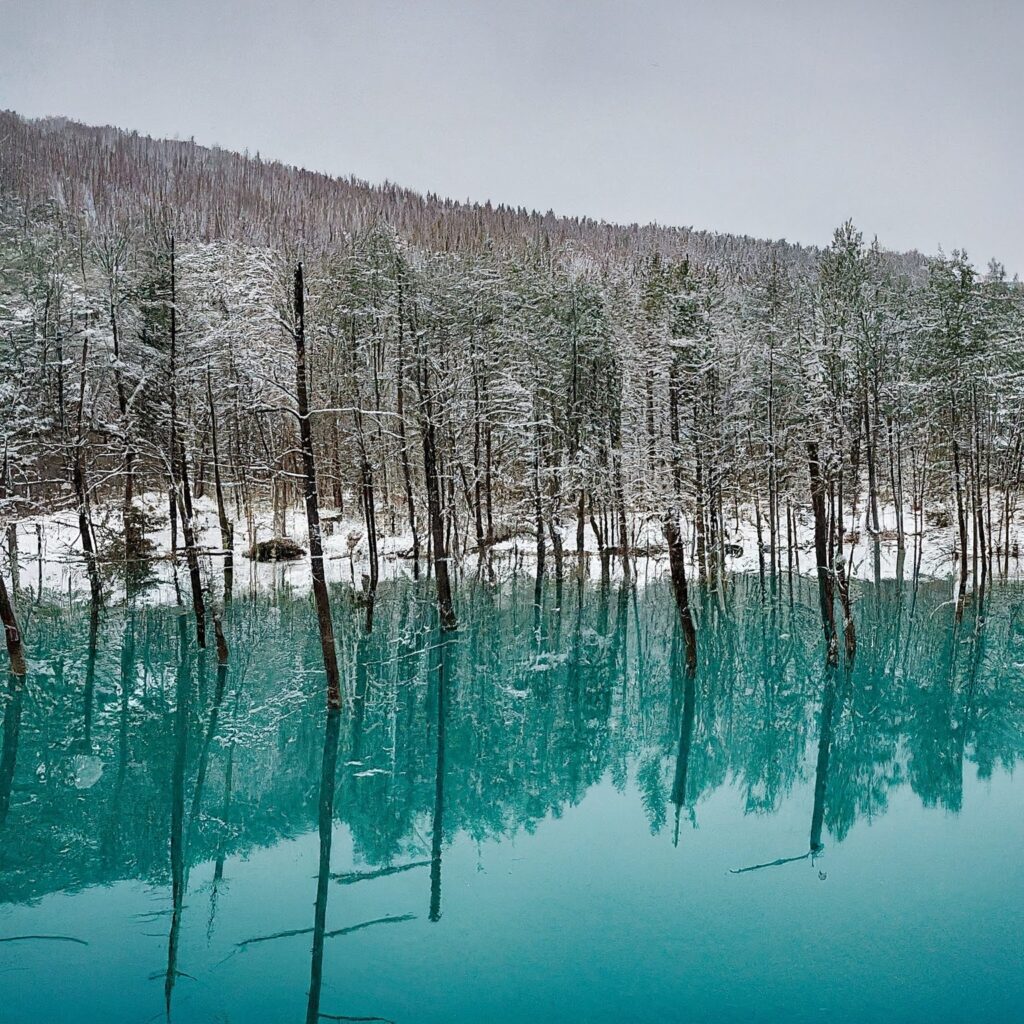
Nestled amidst the picturesque mountains of Biei, Hokkaido, lies the Blue Pond – a mesmerizing body of water known for its vibrant, almost unreal, blue color. Often referred to as “Aoike” (meaning “blue pond” in Japanese), this enchanting pond is a relatively new phenomenon, but has quickly become a popular tourist destination in Japan.
An Accidental Masterpiece: Unlike most natural lakes, the Blue Pond’s vibrant color isn’t a result of Mother Nature’s artistry alone. The pond was created in 1988 as part of an erosion control project to prevent mudflows from reaching the nearby town of Biei. Aluminum particles from the nearby Shirahige Falls mixed with the clear water from the Biei River, creating a unique colloidal suspension that reflects the blue hues of the sky.
A Canvas Painted by Nature: The Blue Pond’s beauty is ever-changing, influenced by the seasons and weather conditions. On sunny days, the water shimmers with an almost turquoise brilliance. On cloudy days, it takes on a more muted, ethereal blue. In winter, the surrounding landscape transforms into a snowy wonderland, with the blue pond offering a stark contrast.
A Fairytale Escape: Surrounded by towering trees and lush greenery, the Blue Pond offers a serene escape. Walking trails lead you around the perimeter, offering different perspectives of this captivating body of water. For a truly magical experience, visit the pond early in the morning when the mist hangs low, creating an almost mystical atmosphere.
Beyond the Blue: While the Blue Pond is undoubtedly the star attraction, the surrounding Biei region offers much more to explore. Explore charming towns, picturesque farms, and rolling hills that paint a picture-perfect postcard of rural Japan. Experience the Allure – The Blue Pond is a captivating testament to the beauty of nature, even when touched by human intervention. Plan your visit to this enchanting place and discover the magic that awaits in Biei, Japan.
8. Oirase Gorge: Japan’s Natural Wonder

Nestled amidst the lush mountains of Aomori Prefecture, Oirase Gorge beckons nature enthusiasts with its breathtaking scenery and cascading waterfalls. This designated natural monument and scenic spot is a haven for tranquility, offering a refreshing escape for all who visit.
A Walk Through a Watery Wonderland:
The heart of Oirase Gorge lies in its 14-kilometer scenic walking path. This easily accessible trail, suitable for pedestrians and cyclists alike, winds alongside the Oirase Stream, the lifeblood of the gorge. As you walk, be mesmerized by the crystal-clear waters cascading over moss-covered rocks, creating a symphony of sound and movement.
A Paradise for Waterfall Lovers: Over a dozen waterfalls grace the Oirase Stream, each adding its unique charm to the landscape. Be captivated by the cascading power of Tadami Falls, the tallest in the gorge, or marvel at the delicate beauty of the veil-like Shirakami Falls.
A Tapestry of Nature: Beyond the waterfalls, Oirase Gorge boasts a vibrant tapestry of flora and fauna. Lush green forests teeming with life line the path, while vibrant wildflowers add splashes of color in spring and summer. Keep your eyes peeled for native bird species flitting through the branches, adding to the peaceful atmosphere.
Exploring Further: For a truly immersive experience, consider renting a bicycle and exploring the gorge at your own pace. Several rest stops along the way offer opportunities to relax, take in the scenery, and capture stunning photos.
Planning Your Oirase Getaway: Oirase Gorge is easily accessible by bus from either Aomori or Hachinohe stations. The best time to visit depends on your preference. Autumn boasts stunning foliage, while spring offers a vibrant display of wildflowers. Oirase Gorge is more than just a scenic spot; it’s an experience for the soul. With its stunning waterfalls, tranquil atmosphere, and rich biodiversity, Oirase Gorge promises an unforgettable escape for every visitor.
9. A Walk Through Tranquility: Exploring the Arashiyama Bamboo Grove
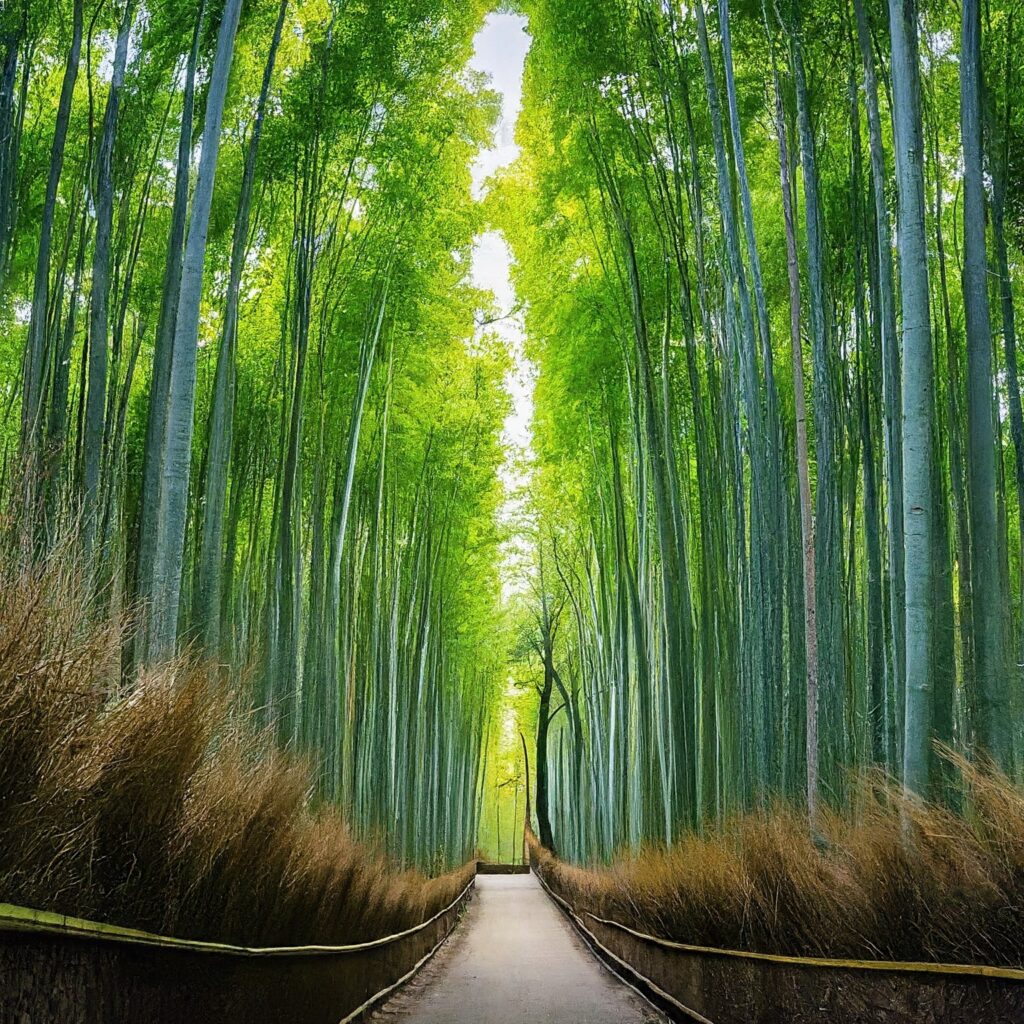
Nestled amidst the vibrant city of Kyoto, Japan, lies the Arashiyama Bamboo Grove, a captivating oasis of towering green stalks. This ethereal grove offers a serene escape, transporting visitors to a world of tranquility and natural beauty.
A Towering Sea of Green: Step into the Arashiyama Bamboo Grove and be greeted by a mesmerizing sight. Towering stalks of Moso bamboo, reaching towards the sky, create a dense canopy overhead. Sunlight filters through the leaves, casting a dappled light on the bamboo path below. The gentle rustling of the leaves creates a calming symphony, a perfect escape from the city’s bustle.
A Journey Through History: The Arashiyama Bamboo Grove boasts a rich history dating back centuries. These towering bamboos were originally planted to enhance the beauty of nearby temples and shrines. The grove’s serene atmosphere has long been a draw for visitors seeking peace and reflection.
Exploring Beyond the Grove: While the bamboo grove itself is the main attraction, the surrounding Arashiyama district offers further exploration. Explore the serene Tenryu-ji temple, a UNESCO World Heritage Site known for its beautiful gardens. Stroll along the picturesque Togetsukyo Bridge, a classic wooden bridge spanning the Katsura River. Immerse yourself in the vibrant Arashiyama Bamboo Forest Park, offering walking paths and scenic viewpoints. The Arashiyama Bamboo Grove is a free-entry attraction, open year-round. Early mornings and evenings offer the most peaceful experience, allowing you to truly appreciate the grove’s serenity. Be sure to wear comfortable shoes, as the paths can be uneven.
A Must-Visit for Nature Lovers: The Arashiyama Bamboo Grove is a captivating escape for nature lovers and travelers seeking tranquility. With its towering stalks, calming atmosphere, and rich history, the grove offers a unique and unforgettable experience.
10. Mount Yoshino: A Paradise of Cherry Blossoms in Japan
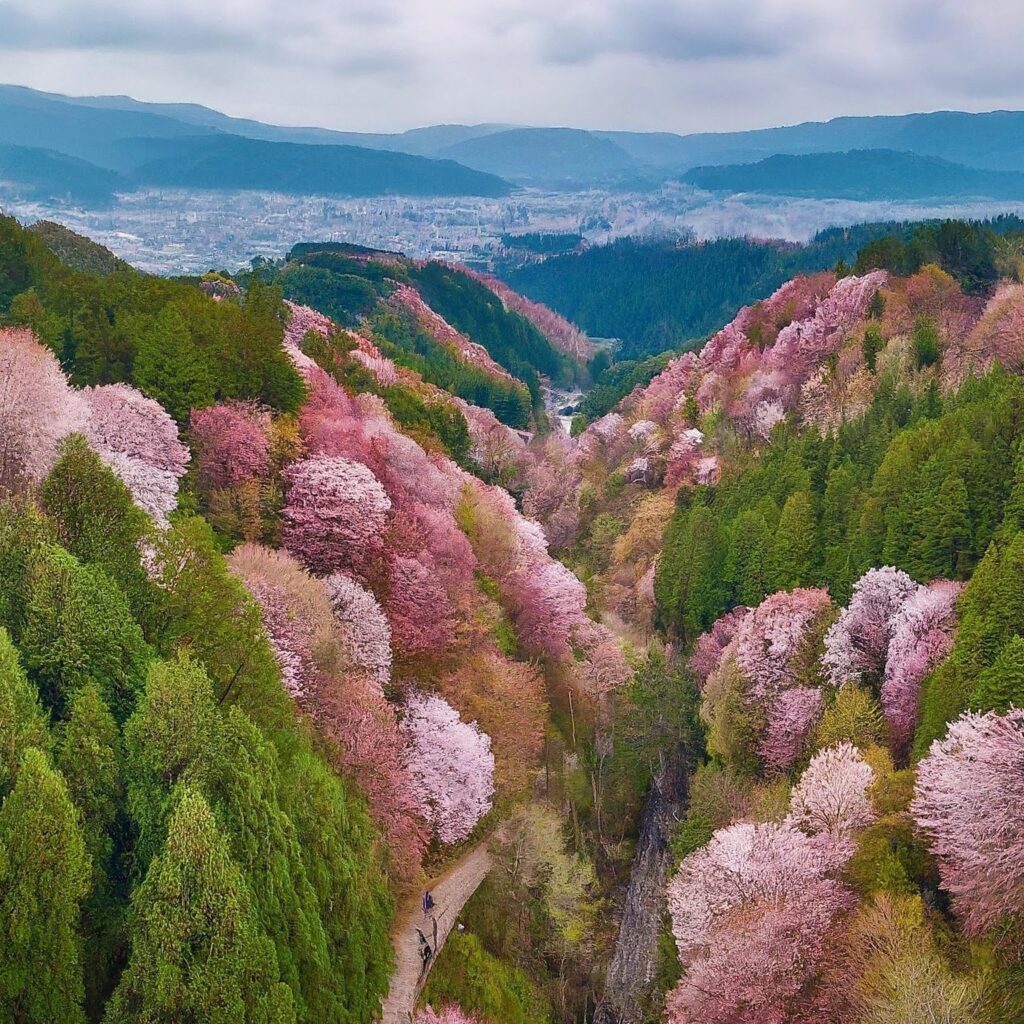
Nestled amidst the picturesque Nara Prefecture, Mount Yoshino beckons travelers seeking a breathtaking spectacle of nature. Renowned as Japan’s most famous cherry blossom destination, Mount Yoshino transforms into a magical wonderland every spring.
A Canvas Painted Pink: During peak bloom, typically in late March or early April, over 30,000 cherry trees erupt in a cascade of delicate pink blossoms. Hike or ride the Yoshino Ropeway, one of Japan’s oldest cable cars, for panoramic views of the mountain slopes awash in a sea of pink. Explore the four distinct areas – Shimo Senbon (Lower 1000 Trees), Naka Senbon (Middle 1000 Trees), Kami Senbon (Upper 1000 Trees), and Oku Senbon (Inner 1000 Trees) – each offering unique perspectives on the floral extravaganza.
Beyond the Blossoms: Mount Yoshino’s beauty extends beyond the cherry blossoms. Immerse yourself in the rich history and spiritual significance of the mountain. Explore sacred shrines and temples, including Yoshino Mikumari Shrine, a UNESCO World Heritage Site, nestled amidst the cherry trees. Hike through serene forests and discover hidden waterfalls cascading down the mountain slopes. Embrace the local culture during your visit. Savor traditional Japanese delicacies like sakura mochi (rice cakes filled with sweet bean paste) or oshizushi (pressed sushi wrapped in persimmon leaves), both specialties of the region. Witness traditional performances like Noh theater or tea ceremonies, adding depth to your cultural experience.
Experience the Magic: Mount Yoshino offers a captivating blend of natural beauty, cultural richness, and spiritual significance. Whether you’re a nature enthusiast, a history buff, or simply seeking a serene escape, Mount Yoshino promises an unforgettable adventure.

Hello! I just would like to give a huge thumbs up for the great info you have here on this post. I will be coming back to your blog for more soon.